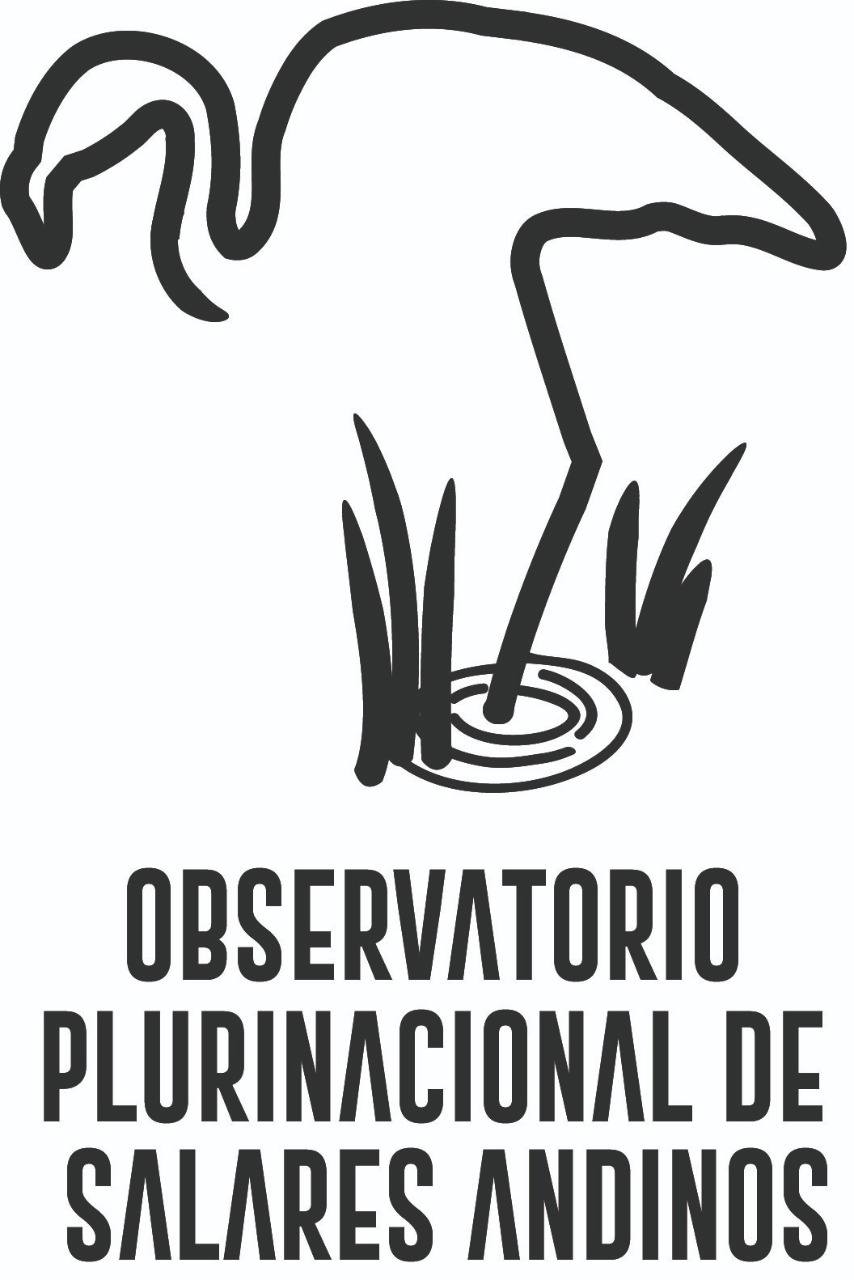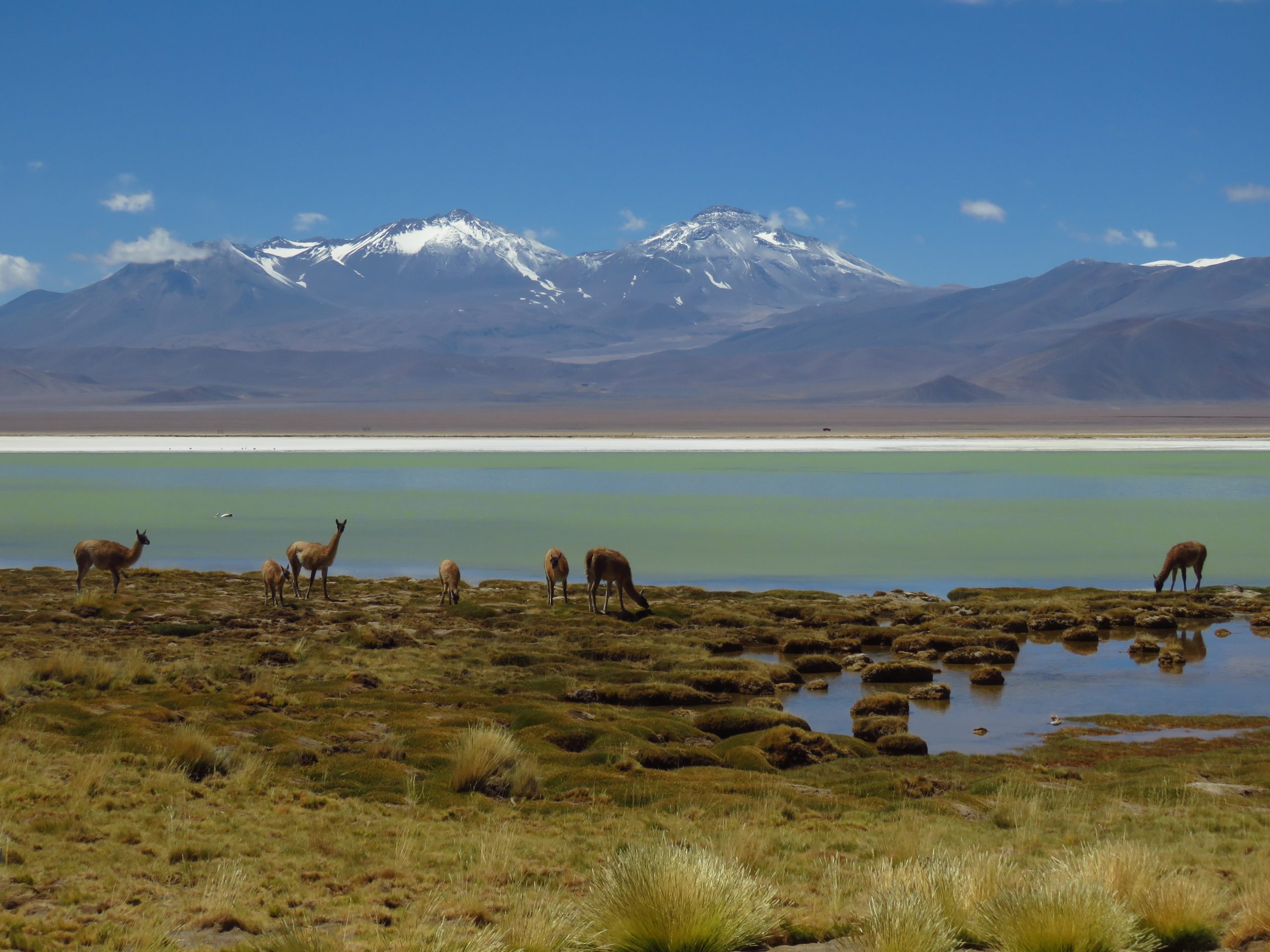We replicate the journalistic article published by the newspaper El Ciudadano together with Fundación Tantí «Colla communities want to prevent Maricunga salt flat from becomingthe new Salar de Atacama».
Codelco announced that the Maricunga salt flat is the second deposit with the highest lithium concentrations worldwide. However, environmentalists, communities, and scientists fear that despite the promises of protection, it will be exposed to or suffer irreversible damage, as has happened with salt flats further north in Chile.
The welcome to the town of Copiapó is one typical of mining towns: hills of tailings surrounding the city, interspersed with the natural gray and brown hills of the Atacama Desert. On the way to the foothills, the landscape heals that image as nature makes its way, and the Andean mountains intensify in size and number as you approach the border with Argentina through the San Francisco Pass.
This endorheic basin and the Maricunga salt flat are located 160 kilometers to the northeast of Copiapó, exceeding 3,700 meters above sea level. Between February 2022 and June 2023, Codelco carried out the first exploration campaign on its properties, which included 10 wells totaling 2,368 m. The average lithium concentration of the 132 analyzed samples was 1,073 mg/l.
When the government of President Gabriel Boric announced the National Lithium Strategy (ENL, in Spanish) at the end of April 2023, which included the exploitation of this salt flat, the Colla communities expressed their opposition, claiming that they had not been consulted on the matter. Already in 2022, they had managed, through judicial means, to paralyze the lithium bidding process carried out by the government of Sebastián Piñera, warning of the risk it meant for the Maricunga salt flat ecosystem.
The Collas, a transhumant indigenous people who have lived in the area between the Atacama Desert and the Andes mountains for hundreds of years, expressed their indignation for not having been considered before this announcement. President Boric’s decision implied that this extensive territory, in which they move without any further haste than the pace they were used to, was suddenly under threat. For them, it is a sacred place that holds not only their memories and rituals but it is also where their deceased loved ones rest. A space they feel part of even though it is their nature to be in constant movement. For this reason, they have already brought two private companies to justice and have not hesitated to try and stop the current government’s intentions.
The National Copper Company (Codelco) reported that the Maricunga salt flat is the second deposit with the highest concentrations of lithium recognized worldwide, only surpassed by the nearby Atacama, exploited decades ago. Environmentalists, communities, and scientists fear that despite the promises of protection, the Maricunga salt flat will be exposed to or suffer irreversible damage, as has happened in salt flats further north in Chile.
There are already precedents that justify fearing the consequences of contamination or irreparable damage to the territory because of continued mining activity. It was in 2018 when the Superintendence of the Environment (SMA) ordered the closure of the water extraction facilities of the gold deposit of Minera Maricunga S.A., an operation that belonged to the Canadian transnational Kinross Gold. This judicial decision was made because 70 hectares in the Laguna del Negro Francisco (Complejo Lacustre Laguna del Negro Francisco) and Laguna Santa Rosa were dessiccated.
In addition, according to a report presented by the National Forestry Corporation (CONAF) on February 2 of this year, during World Wetlands Day’s commemoration, the presence of at least 1,500 high Andean flamingos was confirmed. The Great Lagoon of the Salar de Maricunga is a particularly special place with one of the highest concentrations of flamingos and nesting spots in the whole country. This is thus an essential ecosystem where Andean, Chilean, and James’ flamingos construct their nests and then go through their nesting stage right on the edge of the salt flat.
Cristina Dorador, a Ph.D. in Natural Sciences and a microbiology researcher, believes there is a big difference between the two salt flats. «The Maricunga salt flat is in the highlands of the Andes, unlike the Atacama, and the rainfall and evaporation regimes are different. For the same reason, the high Andean salt flats are very fragile, precisely because of these balances that are so delicate,» says Dorador.
The former conventional (a term used in Chile to name the people elected to write a new constitution) clarifies from Antofagasta that the potential damage is highly dependent on the extraction method that is going to be used. As an example, Dorador points out the experiences in high-altitude salt flats such as the Uyuni in Bolivia and others in Argentina but explains that there is little information on the salt flats’ behavior from an environmental perspective.
«For some salt flats, local climate changes have already been described that affect the water balances of the basins. The ponds end up evaporating faster than they normally do. So there are a lot of topics and issues that must be analyzed,» says the scientist.
Dorador is struck by the fact that, although the majority has assumed that there is a risk because they are very fragile salt flats, «some opinion columns about lithium still question or say that the risks or environmental effects of lithium mining in the salt flats have not yet been scientifically proven, when in reality the effects have been reported several times. So the precautionary principle has to be incorporated here, considering what has already happened in other salt flats.»
The fight for recognition
Isabel Godoy is a former delegate to Chile’s constitutional convention and was the only representative of the Colla people who sought to write a new Chilean Constitution between 2021 and 2022. This Thursday afternoon, she has just left a meeting with local leaders and her cousin, Sandra Rojas, president of the National Council of the Colla People; they talk in a café where they define their position concerning the negotiations and what they expect from the government and the authorities.
«We believe that we must be part of any action that is taken in the salt flats», says Isabel Godoy at the outset. That is, if the National Lithium Institute is going to be created, we must have a presence. Maybe we are not experts, but we do have NGOs that support us, and they can be the ones who help us see the impact and effects of the intervention in the salt flat.
The former delegate to Chile’s constitutional convention firmly says that her people want to be a significant player in this process. It is not an issue of how much money goes into the communities but rather about protecting the environment. “Because we are talking about fragile ecosystems with unique flora and fauna. So, if we are going to destroy that, how will this affect the territory more than it already has been affected because they have already introduced mining to us? The results have been disastrous,” she says with confidence.
Although the constitutional convention process ended, Isabel Godoy remains as active as before. She accuses the miners of leaving only destruction behind them and that their presence is not synonymous with jobs, as those who promote mining production often argue.
«They leave us with the mining zone road sign, and we live like miners but earning different salaries. They also don’t give us development because it is finally driven towards other regions», says Godoy.
Sandra Rojas doesn’t see the benefit either. She agrees with Godoy and believes that what has happened in the Atacama salt flat is a great lesson that should not be ignored: “So we do not have to make the same mistakes, but rather learn from the experience that we already see around us and to not limit our decisions to the issue of negotiating how much money we get,” says Rojas. She is mainly referring to the impact suffered by the salt flat, which contains thousands of years of geological history and whose exploitation has generated cumulative and irreparable environmental damage to the ecosystem, as determined by a claim for reparation filed by the Council of State Defense (CDE) against Minera Zaldívar SPA, Albemarle, and Minera Escondida.
Elena Rivera Cardozo, from the Colla Indigenous Community of the Copiapó Commune, also opposes the extraction of the salt flats and has carried out different legal actions. “Deep down, what we are interested in is defending an environmental perspective,” she says. She adds that as an indigenous people, they are located in strategic places that are of interest to the large mining companies and the State, but they—the Collas—will continue to defend the natural wealth that surrounds them.
Máximo Pacheco, president of the board of directors of Codelco, acknowledged in a presentation before the Mining Commission of the Chamber of Deputies that the Salar de Maricunga limits a priority protection area, such as the Tres Cruces National Park and it is close to several Colla communities. Pacheco has promised that the State will be responsible for the environmental impact and for maintaining a good relationship with indigenous communities. However, so far, he has not responded to the meeting requests made by the National Council of the Colla people, which does not have the recognition of all its peers because they are urban communities that live in the city.
“There is no response or disposition to talk. We will continue to fight until the people are considered,” says Rojas. From Codelco’s communications area, they indicated that they are not available for interviews since the ENL is still in process.
The executive has insisted that the state company will address the technological challenges needed to develop lithium’s value chain. “I do not doubt that copper and lithium go hand in hand. We would be an extraordinarily short-sighted company if, as the largest copper producer in the world, we missed the opportunity that lithium represents,” Pacheco said in September 2023, in front of the Senate Mining and Energy Commission, regarding the company’s role in the ENL.
In that same meeting, the president of the Codelco board of directors highlighted his meetings with representatives of the Colla communities of Maricunga, promising an upcoming visit, stating “his intention to correct things that have been done wrong in the past.”
“All the image studies say that Codelco is by far the company most valued and respected by the public opinion. But something happens within the communities whose territories we are present in, that they do not feel the same. They perceive that there is a lot of outstanding debt, that we have not done that job well, and that we must correct that. We are going to correct it because they and Codelco deserve it. This is an opportunity to do different mining, respectful of the environment and friendly to communities,” said Pacheco. He added, “I would not describe the relationship with the communities in Maricunga as a conflictive relationship since there is a relationship characterized by open dialogue.”
*This publication has been possible thanks to the support of the Tanti Foundation

